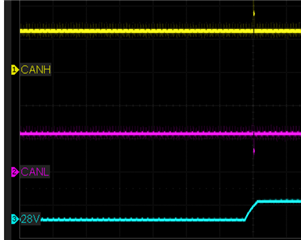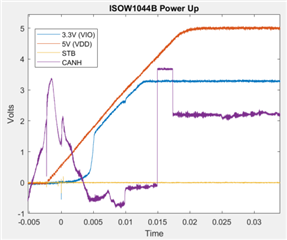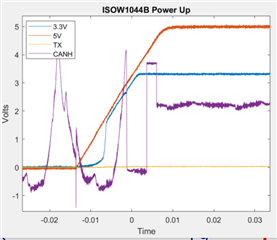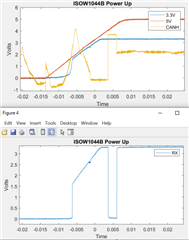Hello,
I found when the part powers up the CAN outputs toggle once before waiting for the RX/TX stimulus. This occurred as the power supply was coming up. Originally, the STB pin was tied to ground. I then delayed pulling the STB pin low by about 100ms, and the pulse moves with STB. This power up pulse sometimes causes errors in the PC tool, so I'm looking for a way to get rid of it.
I have VDD powered with +5V, and VIO with +3.3V. The +3.3V is an LDO derived from +5V, so they effectively come up together.
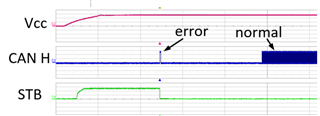
Thank you,
Troy



